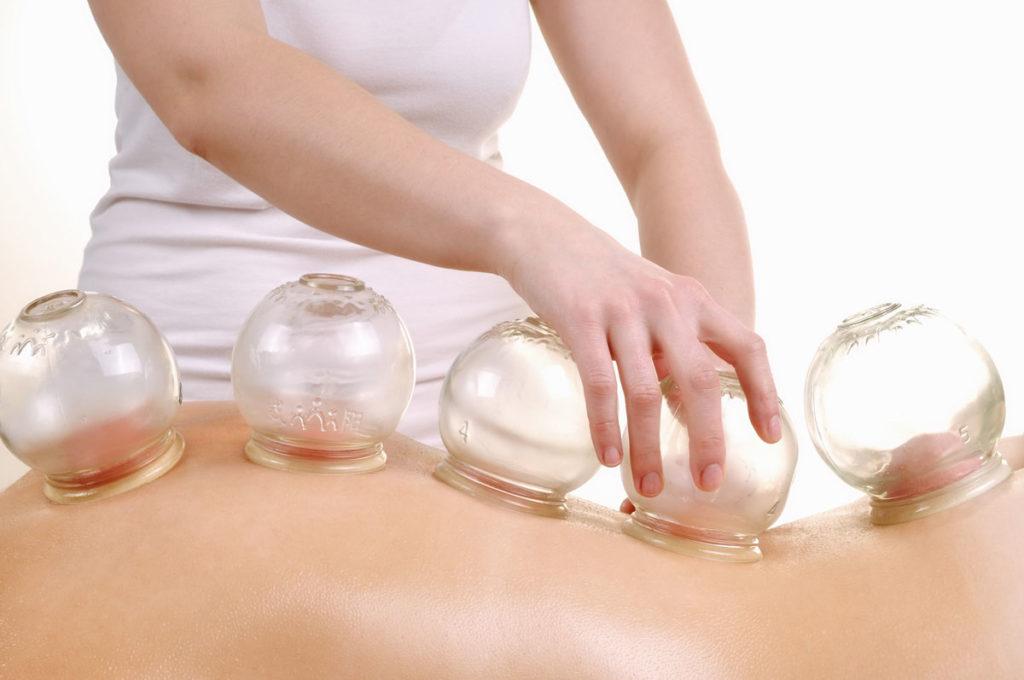Deep-tissue massage is an amazing technique for loosening muscle knots and reducing pain and inflammation. Adding cupping to the massage can facilitate faster relief, with less pain.

Cupping is a healthcare modality that comes from traditional Chinese medicine and dates back approximately 3,000 years. The practices uses small cups originally made from animal bone, but now made of glass, plastic or most common, silicone. The little cups often look like glass jelly jars. By briefly lighting a match in the cup, all the oxygen is pulled from the vessel, creating suction on the skin as it is placed open-side down on the back. The suction pulls the skin partway into the cup, causing a tightening sensation in the area of the cup which actually feels very good. The cups are left in place for anywhere from five to 20 minutes. Sometimes the practitioner will also glide them along the back. Cupping relaxes the muscles and stimulates blood and lymph flow to injured areas in the body.
Using these two therapies together, massage and cupping, is where the magic happens. Here are three reasons why:
It’s relaxing.
While massage itself is relaxing, depending on how deep-tissue you’re going, it can also be intense, so cupping is a nice addition. Cupping along the spine stimulates the parasympathetic nervous system, creating a sedating effect on the body.
It reduces pain.
Research is inconclusive on why exactly cupping works to reduce pain in the body, but it is widely believed the suction on the skin increases blood flow to the area, resulting in a mild immune-system response. Some people also postulate cupping helps to release fascia, the tissue that wraps around the muscles. When fascia is tight, it can pull on muscles and cause pain or impair motion.
It speeds results.
It is said that five minutes of cupping is equivalent to 30 minutes of deep tissue massage. Using cupping alongside massage can bring pain scores down faster and achieve relaxation and healing in less time than it would take with massage alone.


